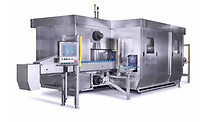TECH FLASH
ISO updates 14001 guidelines
It emphasizes strategic environmental management within strategic planning processes.

ISO, the International Standards Organization, has updated its ISO 14001 environmental management systems (EMS) guidelines to reflect the increased prominence of environmental management within strategic planning processes. A new requirement to understand a manufacturer’s context has been incorporated within the guidelines to identify and leverage opportunities for the benefit of both the manufacturer and the environment.
The revised document focuses particularly on issues or changing circumstances related to the needs and expectations of interested parties (including regulatory requirements) and local, regional or global environmental conditions that can affect, or be affected by, the company. Working with the EMS guidelines, manufacturers can identify priorities, take actions to mitigate adverse risk and/or exploit beneficial opportunities. The 2015 revisions center around a Plan-Do-Check-Act model—which takes into consideration internal and external issues, the needs and expectations of interested parties, the context of the organization and the scope of the EMS to produce intended outcomes.
Companies using ISO 14001 EMS guidelines have seen many benefits. For example, following the guidelines helps manufacturers meet legal environmental requirements and improve environmental performance. When management embraces the guidelines, employees engage to improve the environmental impact of manufacturing operations. Plus, companies following the guidelines have seen value in the area of supplier environmental performance, gained a competitive advantage and realized a financial benefit, in addition to improving their public image.
ISO 14001 has a number of new terms and definitions. Some of these have been included because of the ISO common framework for management system standards, while others are included due to the changing concepts in the 2015 edition. More information can be found in the “Terms and definitions in ISO 14001:2015” document, which compares the terms and definitions in ISO 14001:2015, ISO 14001:2004 and ISO common framework for management systems from May 2015.
Manufacturers with ISO 14001 certification do not have to be certified. Organizations that wish to demonstrate conformity with the ISO standard can make a self-determination and self-declaration, or they can seek confirmation of conformance by parties having interest in the organization, e.g., customers. Companies can also confirm their self-declarations through external third parties or seek certification/registration of their EMS by an external organization. Organizations have a three-year transition period to migrate their EMS to the 2015 edition of the standard.
For more information, visit the ISO/TC207/SC1 (Environmental Management Systems).
Looking for a reprint of this article?
From high-res PDFs to custom plaques, order your copy today!







